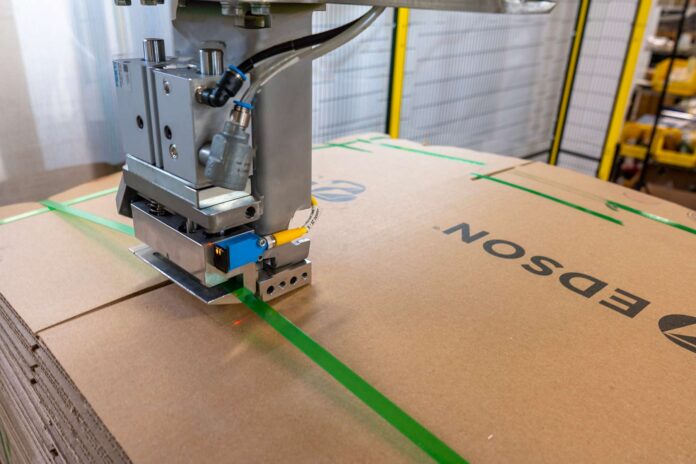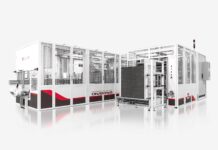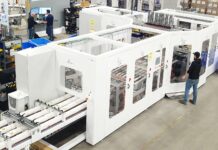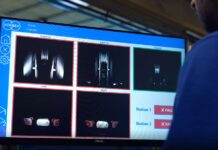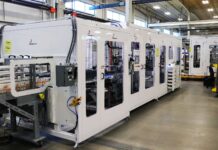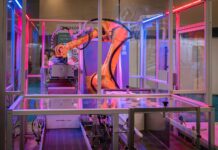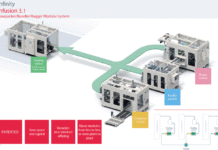Edson Packaging Machinery‘s KDF (Knock Down Flat) Infeed Management System targets improved space management, uniformity and cleanliness. Josh Goulet, Account Manager, explains how. A TWM report.

With recent changing trends in the labour market, we have seen increasing interest in automating new parts of the packaging process.
Companies globally are looking to minimise the number of manual tasks on case packers for better employee utilisation. Some of these tasks involve loading the cases, removing straps, squaring them up, etc. The other key issue for tissue companies is consistency and cleanliness. The stacks will always come out of the cell the same, every time, and the straps, papers and dunnage are always being dropped into a bin, which is consistently requiring less frequent emptying and better space management.
In response to these developing trends, in October 2022 we launched the KDF (Knock Down Flat) Infeed Management System, which is targeted at any manufacturer currently using Edson or non-Edson case packers that feed KDF stacks into the infeed. This system is essentially available to retrofit any case packer and is an option on our 3600 Series case packers (3600, 3600C, 3600HS), but in the process of showcasing the system it can essentially be integrated with any existing case packer or equipment needing KDF preparation or bands removed.
Automation with direct product handling, wrapping, case packing, and palletising aren’t exactly new concepts. However, automating the infeed of a case packer is certainly a first in the converted paper, diaper, and nonwoven industries. What we’ve found from talking to various people is that the usefulness of this robotic system doesn’t end with tissue and nonwovens – it can be extended to a plethora of applications.
We developed the line because we are always thinking of ways to minimise the amount of operator intervention on our equipment. Customer demand was the main driver for development – once customers started to ask, it made it a no-brainer to start thinking about it more seriously and bringing it to life.
The system mimics what an operator would do to prepare a stack of KDFs before sending it to the case packer. The robotic cell will scan and verify that the correct stack has entered the cell, locate, remove and chop the straps and contain the pieces in a bucket, remove all paper on the stack, remove top dunnage (pieces of cardboard on top of the stack to protect the KDFs). It will continue to do this until it finds the top of the stack. Once everything is removed from the stack, the stack will rotate, and the robot will justify each side up against a wall to ensure the stack is squared up and aligned to the downstream equipment datum. Once the stack is completely prepared it is released from the cell and enters the case packer.
In terms of R&D efforts, with innovative equipment the intent is to make it the most efficient it can be to reduce wasted energy in the form of unnecessary processes and time. For this equipment we look to use the most current electrical components which are more efficient than previous versions or alternatives and limit painted components where possible.
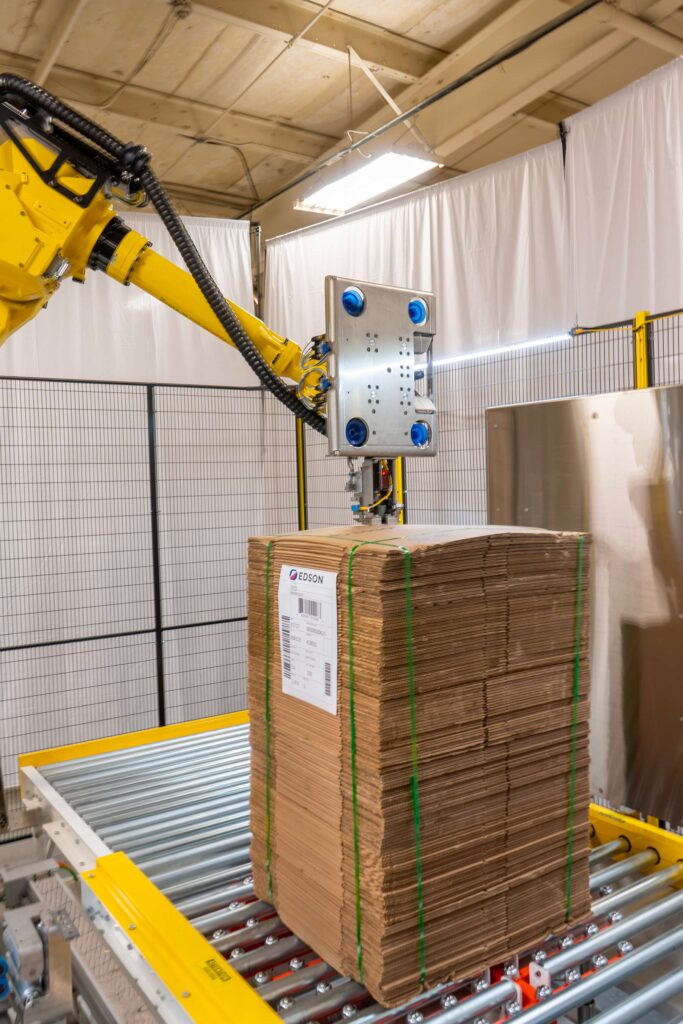
Preparing stacks of KDF is the last manual operation most case packers out there have. The KDF Management system removes that manual operation and allows the operators to be utilised upstream or downstream, ensuring all machines are running well without worrying about keeping the case packer fed with cases. The system can also be utilised with other equipment requiring KDF management or strap removal.
And just a last point on cleanliness; we commonly see bands/straps laying on the manufacturing floor and a forklift will drive over it and it will get caught in the wheel causing maintenance and downtime on other equipment. This system safely chops the bands into a bin for better waste management and safer working conditions. For consistency, the case packer will run with far less jamming if the stack is consistently being loaded into the case packer.
This article was written for TWM by Edson Packaging Machinery‘s Account Manager Josh Goulet.





















